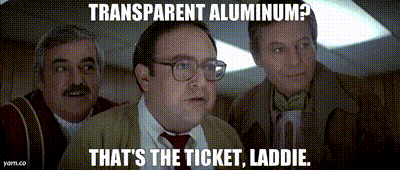
Posted on 07/04/2023 7:07:42 AM PDT by Jonty30
Despite its many advantages, glass has one major Achilles' heel – it’s brittle. Now, engineers at Penn State have developed LionGlass, a new type of the material that’s not only 10 times more damage resistant, but requires significantly less energy to manufacture.
The most commonly used form of glass, which you’ll find in everything from windows to drinking glasses, is technically known as soda lime silicate glass. Manufacturing this common material requires furnaces that get up to 1,500 °C (2,732 °F), which of course consumes a lot of energy and releases a huge amount of carbon dioxide into the atmosphere. On top of that, this glass is made from quartz sand, soda ash and limestone, the latter two of which release CO2 when melted.
Now, Penn State researchers have improved the recipe to make glass that’s more environmentally friendly to produce, while also being much stronger. The family of new glass compositions, which the team calls LionGlass, get their new powers by swapping the soda ash and limestone for either aluminium oxide or an iron compound. The silica content can vary from 40% to 90% by weight.
(Excerpt) Read more at newatlas.com ...
Since they use aluminum in the process, it would seem to be a low grade transparent aluminum.
Just a guess, but China will commercialize it first
“...it would seem to be a low grade transparent aluminum.”
Scotty would be proud!
Scotty has standards better than a ghetto version of his product!
The Gorilla Glass inventor left Corning and went to a research position at Penn State, where he developed Lion Glass.
Old news. The best demonstration of unbreakable glass was done in 1950 by Red Skelton. ;)
The Yellow Cab Man
https://www.bitchute.com/video/Edy1gW71CZCt/
Time travel is real!
“More environmentally friendly” should translate to “cheaper,” eventually. If it’s not potentially cheaper, it’s not more environmentally friendly.
Decades ago, I read an article about creating glass under intense high frequency sound. It said the sound eliminated the microscopic cracks that are normally produced in glass production, resulting in much stronger glass.
Impressive indeed!
BFL
Since it’s still up to 90% silica, I’d say I wouldn’t characterize it as such, but it is an interesting comparison.

Maybe we can all live in glass houses in the future.
And drive transparent glass cars.
And transparent airplanes.
But, we’ll never get transparent government.
No transparent hotels, please.
The big question will be how can it handle erosion?
That is, extremes of heat and cold, ice, UV and IR light, electricity, and wind (sand blasting). They need to do ballistic tests on it. And can it be welded like glass to plastic to make it safety glass.
Regular glass is also highly resistant to acids and bases, excepting hydrofluoric acid, and hexafluorosilicic acid (H2SiF6).
What are its heat and cold tolerances? Melting point?
Safelite repair, Safelite replace.
I don’t know what percentage of aluminum this glass has, but the little it has has made it ten times stronger.
As they refine the process and increase aluminum to glass ratio, it may not unreasonable to get 50x the strength of glass.
They’re using aluminum oxide, which is what rubies and sapphires are made of. You could call those gems “transparent aluminum”, I suppose, but it would be a stretch.
That’s why I called it a low-grade version.
I would be happy with a cell phone that is stronger than gorilla glass.
I hope this glass will be cheap enough to make into affordable glass baking dishes and such. Be nice if I had one that wouldn’t break when it slips out of my soapy hands.
I haven’t broken a cell phone yet, but only because I practically never carry one.
Disclaimer: Opinions posted on Free Republic are those of the individual posters and do not necessarily represent the opinion of Free Republic or its management. All materials posted herein are protected by copyright law and the exemption for fair use of copyrighted works.